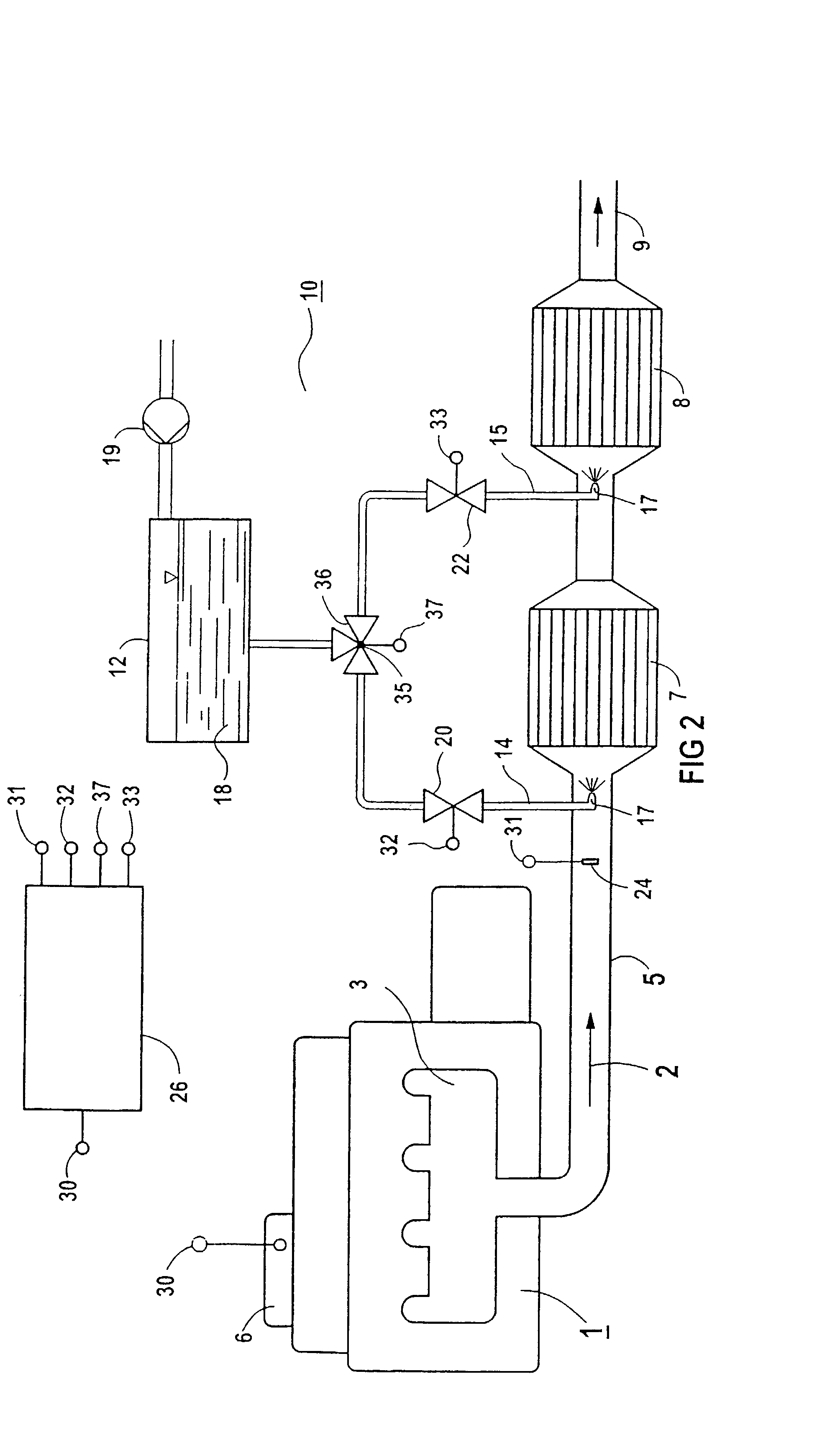System and method for converting system management data to be viewed and updated before or during runtime of an operating system
- Summary
- Abstract
- Description
- Claims
- Application Information
AI Technical Summary
Benefits of technology
Problems solved by technology
Method used
Image
Examples
Embodiment Construction
[0027]FIG. 1 diagrammatically depicts an exhaust-cleaning system for a combustion system 1, which in the case illustrated is designed as a diesel engine. The exhaust gas 2 from the combustion system 1 leaves the diesel engine through an exhaust manifold 3 and passes into the environment via an exhaust pipe 5. The diesel engine has an engine management system 6, which via an interface 30 provides operationally relevant parameters of the diesel engine, such as control-rod displacement, rotational speed, torque or injection time.
[0028]In the exhaust pipe 5, there is an oxidation catalytic converter 7 and a reduction catalytic converter 8 downstream of the oxidation catalytic converter. Both catalytic converters 7 and 8 are designed as honeycomb bodies through which medium can flow and which have a number of parallel flow passages. On its surface which is accessible to the exhaust gas 2, the oxidation catalytic converter 7 has 50–90 g / cf of platinum. The catalyst support itself comprise...
PUM
 Login to View More
Login to View More Abstract
Description
Claims
Application Information
 Login to View More
Login to View More - R&D
- Intellectual Property
- Life Sciences
- Materials
- Tech Scout
- Unparalleled Data Quality
- Higher Quality Content
- 60% Fewer Hallucinations
Browse by: Latest US Patents, China's latest patents, Technical Efficacy Thesaurus, Application Domain, Technology Topic, Popular Technical Reports.
© 2025 PatSnap. All rights reserved.Legal|Privacy policy|Modern Slavery Act Transparency Statement|Sitemap|About US| Contact US: help@patsnap.com


